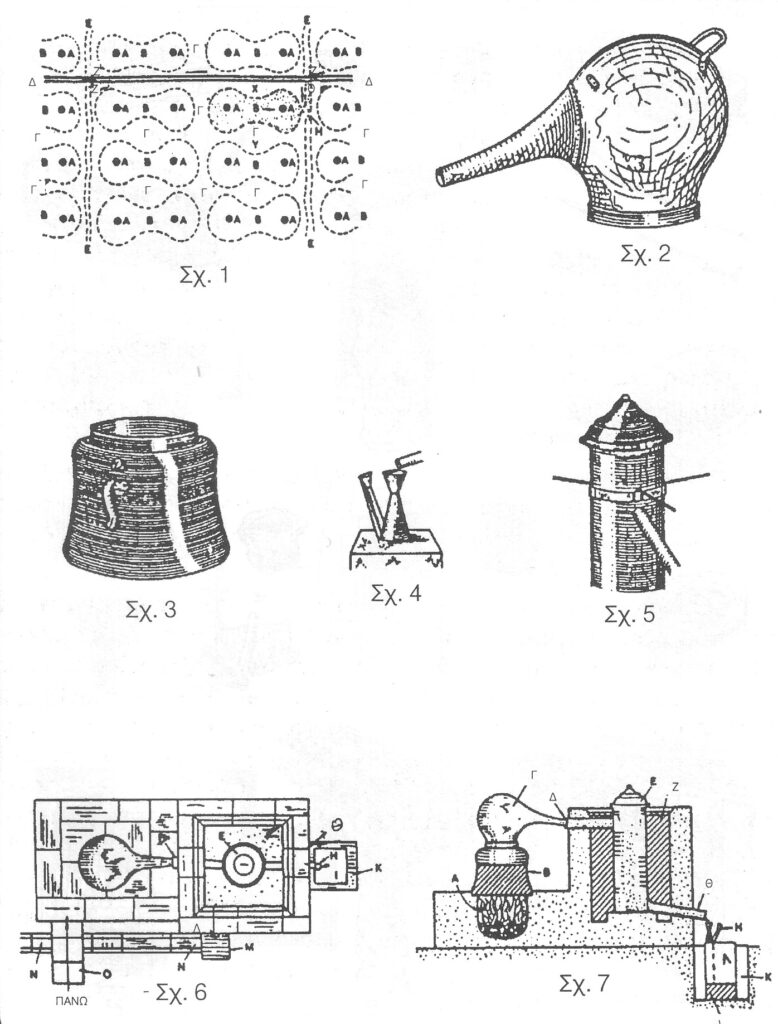CULTIVATIONS

Citrus fruits
For many centuries, citrus fruits have been the most important products in the orchards of Kambos. A huge fragrant forest of citrus trees, 5km long and about 2km wide, with a complicated network of narrow streets, divided into orchards and fenced with high walls.
This arrangement of the orchards in Kambos, probably dates back to the Genoese occupation of the island in the 14th century.

Most of the trees bear oranges and mandarins. Some have lemons and bitter oranges. There are also, bergamots, grapefruits, and citrons. The fertile lowland soil and the rich water of Kambos, combined with the microclimate of the area, have contributed in the development of unique varieties, such as the mandarin and the orange of Chios.

The fruit growers here used the dense planting technique,so one can only see the trunks of the trees and the foliage However, you can sometimes spot above the trees the view of the mountains on one side and the sea on the other, together with the beautiful shores of Asia Minor opposite.
About 80 to 100 trees are cultivated in every hectare. The lemon trees are positioned in the centre of the orchard because they are the most vulnerable to the cold; around them we find the other citrus fruits. Around the citrus trees, together with the big walls, olive trees or other trees are planted, serving as wind barriers.
Olive growing
Olive growing is one of the oldest cultures in Kambos. Olive trees play an important role and together with pomegranate trees and cypresses are often used as a protective barrier for the fragile citrus trees. Olive oil is also a key part of the traditional diet, so olive trees was a must have for most orchards. According to Evangelos Gianniris, owner of the last olive press of Kambos, there were many olive presses in the area, catering to the local need for olive oil.
Trees
Kambos had an important production of cereal,vegetables, pomegranates, mulberries, and wine, even before the arrival of the Genoese.
Most of the travelers’ reports refer to the large areas covered by citrus. Apart from the large areas of citrus trees, one can also find in Kambos pomegranates, cypresses, pine trees and even palm trees.
There were also many mulberry trees, which were needed for the breeding of silkworms. The production of silk in Kambos provided the inhabitants with an important income and has been a source of wealth for Chios for many centuries. The people of Chios were specialised in the processing of silk and their weaving was exceptional, so their silk work was sought after.
The English traveller Richard Pockoke (1739) writes:
“ …In the valley there are also several gardens of mulberry trees for the feeding of silk worms; the most beautiful have pathways in the middle as well as next to the house, they also have square pillars on each side, and benches built among them made of hewn stone…”
Today there are many trees in Kambos (pine trees, cypresses, araucarias, palm trees and others) that appear to have been planted at the beginning of the 20th century.
Vines
Vines were oneof the main cultures before the expansion into citrus fruit production. Throughout the years, however, production got downgraded and limited to self-use or local small-scale trading. A big proportion of the production was made into wine or distilled. Travellers that visited Chios in the 18th century reported seeing vines in the courtyard of the orchard: Richard Pococke (1739) – English traveller – wrote that grapevines were held by pillars and created arbours, and around those were orchards.

According to Julien Galland (1747),inside the farm there was a small square cistern, with pillars in its four corners, consisting of red and white stones holding together an arbour with grapevines.
The French Francois Perilla, who visited Chios in 1928, said that the fields have vines.
John Covel, who stayed in Chios for 10 days in 1677, said regarding the rural mansions:
“North of the city are plenty of vines, owned by the community; there (like in Galata) who doesn’t own vines and a tower within them is not considered a gentleman…”

According to Julien Galland (1747),inside the farm there was a small square cistern, with pillars in its four corners, consisting of red and white stones holding together an arbour with grapevines.
The French Francois Perilla, who visited Chios in 1928, said that the fields have vines.
John Covel, who stayed in Chios for 10 days in 1677, said regarding the rural mansions:
“North of the city are plenty of vines, owned by the community; there (like in Galata) who doesn’t own vines and a tower within them is not considered a gentleman…”
Fields
The field was an integral part of the orchard. As the estates were self-sufficient, the field supplied the household with basic products that the people and the animals needed. During the Ottoman census of the estates of Kambos in 1870, the fields consisted of one third of the estates and occupied about half the area of the cultivated land. In the Ottoman census of the estates of Kampos in 1870, the fields constitute one third of the estates and occupy about half of the area of arable land.
The fields were used for cultivating pulses, vegetables, cereals and in recent years, potatoes. . During the Ottoman rule, the fields were predominant in Muslim properties, that rarely had citrus fruits or noticeable mansions.
Processing Facilities
DISTILLERY
Anything that was to be distilled (like orange blossoms together with their fruit) was put in a copper cauldron. Twice the volume in water was then added. The copper distiller (a cap called rebikos) was positioned on top of the cauldron. The whole unit was sealed with a mixture of clay and ash. A wood fire was put on and when the distillery was too hot to touch was put out again. Steam passed through the distiller inside the copper kalogeros, a barrel (E). The barrel was inside a brick manhole (called tagari), filled with cold water, 5 cm below the cap. All the tubes were copper. Under the tube, at the basis of the distillery (called loulas), lay a tin container, that gathered the distilled product. This is the most typical type of distillery, and there is one at the Argentis mansion. Add water with orange blossoms in a ratio of 6 to 3. The copper distiller (lid or remnant) is placed on the cauldron. The whole set is closed by a mixture of clay and coal ash. They light a very strong fire with wood and when the distiller is too hot and they can not touch it, they extinguish the fire. The steam passes from the distiller to the bronze monk with the letter E. He is in a brick well filled with cold water, five points below the lid. All pipes are made of copper. Under one of the pipes located at the base of the distiller mechanism (loulas) there is a tin container to which the oil is attached. The hot water from the monk is channeled to point M from the upper end of the well and is poured from another tank. The oil or funnel is separate from the rest of the device. The outer mouth is larger than the inner and is attached to the lid of the container (usually a deneke). Such a distiller device exists in Argentina and is the typical type used.

Smith A. and Vlysidou EM, Kampos-Kastro, Selection of texts translated by EM Vlysidou from the book Smith A., "The architecture of Chios, 1962", Kampos High School, Environmental Education Program, Homer Cultural Center of Chios 1995.
Wine Press
In older times,the grapes in Kambos were pressed inside a square stone cistern called patos. The bottom surface of the cistern tilted towards a hole, from which juice was poured out into a container, sunken inside the floor. The first juice of the grapes was called premature and was used to make a dessert with flour called moustalevria. In the middle of the patos, was positioned the kalamoti, a tool made of small tree branches of around the same size, held together by a rope, creating a cylindrical structure. Inside there were put the grapes to be pressed. The person who crushed the grapes, kept the rhythm with their feet, holding onto a rope, tied to a pillar. This procedure was repeated twice. The juice was then put inside huge clay vases for about 40 days, until it fermented. The first juice that was drained from the net weight of the grapes was called premature and it was used to make a sweet, mustard flour. Must is the juice of the grapes before boiling. In the middle of the bottom they place the reed, in which they put the grapes and trample them. The man who tramples them, keeps the rhythm of the movement of his legs, by being caught by a rope tied to a beam. This process is repeated twice. The reed is made of small straight branches, isometric, tied together with a rope, to form a hollow cylinder. The juice is placed in large clay pits for 40 days until it “boils” (until it dries).